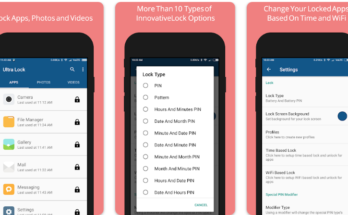HOW TO USE LIVE TRACKER
Using a live tracker website can be a useful way to monitor various types of data, such as the location of a package, the status of a flight, or the movement of a hurricane. Here’s a general guide on how to use a live tracker website:
1. Choose the Right Website:
There are many live tracker websites available, each specializing in specific types of tracking. You’ll want to select a website that aligns with what you want to track. Some examples include package trackers like UPS or FedEx, flight trackers like FlightAware or FlightRadar24, or weather trackers like the National Hurricane Center.
2. Access the Website:
Once you’ve decided on the type of tracking you need, access the website by entering its URL into your web browser or by using a search engine to find the appropriate site.
3. Enter Tracking Information:
Depending on the type of tracking you’re interested in, you’ll need to input specific information. For example, if you’re tracking a package, you’ll need the tracking number provided by the shipping service. If you’re tracking a flight, you might need the airline and flight number, or the departure and arrival airports.
4. View the Live Tracking Information:
After entering the required information, the website will display live tracking updates based on the data available. This could include the current location of a shipment, the real-time position of a flight, or the latest data on a weather event.
5. Interpret the Data:
Once you have access to the live tracking information, take the time to understand what it means. For package tracking, you might see updates like “out for delivery” or “arrived at facility.” For flight tracking, you could see details such as altitude, speed, and estimated arrival time. Weather trackers might display the current position and projected path of a storm.
6. Use the Information:
After interpreting the live tracking data, you can use it to make informed decisions or simply stay informed. For example, if your package’s live tracker says it’s out for delivery, you might make sure someone is available to receive it. If you’re tracking a flight, you could use the information to anticipate an arrival time.
7. Troubleshoot:
If you encounter any issues with the live tracker website, such as a lack of updated data or difficulty finding the right tracking information, refer to the website’s help and support resources. Many live tracker websites offer FAQs, customer support contacts, or other guidance to help users navigate the tracking process.
Remember, each live tracker website may have its own unique interface and specific steps for tracking different types of data. Always refer to the website’s instructions and resources for the most accurate guidance.
Live tracker Best feature
Live tracker websites offer a range of features to make tracking various types of data more convenient and efficient. Here are some of the best features commonly found on live tracker websites:
1. Real-Time Tracking: Live tracker websites provide real-time updates on the location and status of the tracked item, whether it’s a package, a flight, a vehicle, or a weather event. This feature allows users to stay informed about the latest developments as they occur.
2. Interactive Maps: Many live tracker websites incorporate interactive maps that visually represent the tracked data. Users can zoom in, zoom out, and pan across the map to get a detailed view of the item’s location, trajectory, or route.
3. Notifications and Alerts: Users can set up notifications and alerts to receive updates on tracked items via email, SMS, or push notifications. This feature ensures that users stay informed even when they are not actively monitoring the live tracker website.
4. Historical Data: Some live tracker websites offer access to historical data, allowing users to review past tracking information and trends. This feature can be valuable for analyzing patterns or documenting the progress of a tracked item over time.
5. Multiple Tracking Options: Live tracker websites often support tracking for various types of items, such as packages from different carriers, flights from different airlines, or multiple weather events. This versatility allows users to conveniently track different types of data within a single platform.
6. Customized Views: Users can customize the way tracking information is displayed based on their preferences. This may include options to switch between different map views, organize tracked items into categories, or filter out specific types of data.
7. Integration with Other Services: Some live tracker websites offer integration with other services and platforms. This can include integration with e-commerce platforms for package tracking, integration with travel booking sites for flight tracking, or integration with emergency management systems for weather tracking.
8. User-Friendly Interface: A well-designed user interface that is intuitive and easy to navigate enhances the overall tracking experience. Users should be able to access tracking information, manage settings, and interpret data with minimal effort.
9. Mobile Accessibility: Many live tracker websites offer mobile-friendly versions or dedicated mobile apps, allowing users to track data on the go using smartphones and tablets. Mobile accessibility increases convenience and flexibility for users.
10. Customer Support: Reliable live tracker websites provide customer support resources, including FAQs, user guides, and responsive customer service channels. This ensures that users can easily troubleshoot issues or get assistance when needed.
11. Security and Privacy: Live tracker websites prioritize the security of user data and ensure the protection of sensitive tracking information. This includes secure login features, data encryption, and adherence to privacy regulations.
12. Tracking History and Reports: Users can access comprehensive tracking history and generate reports summarizing tracking data over specific time periods. This feature is particularly useful for business users and individuals who require detailed tracking records for accounting or analysis purposes.
13. Multilingual Support: To cater to a diverse user base, live tracker websites may offer multilingual support, allowing users to access tracking information in their preferred language.
14. API Access for Developers: For businesses and developers, some live tracker websites offer APIs (Application Programming Interfaces) that allow for seamless integration of tracking data into custom applications, systems, or websites.
15. Multi-Platform Compatibility: Live tracker websites that are compatible across different web browsers and operating systems ensure that users can access tracking information from various devices without compatibility issues.
When choosing a live tracker website, consider these features and determine which ones are most important for your specific tracking needs. Whether you’re monitoring packages, flights, vehicles, or weather events, the right combination of features can make your tracking experience more efficient and insightful.
Conclusion
In conclusion, live tracker websites offer a range of valuable features that make tracking various types of data more convenient, efficient, and insightful. These features include real-time tracking, interactive maps, notifications and alerts, historical data access, multiple tracking options, customized views, integration with other services, user-friendly interfaces, mobile accessibility, customer support, security and privacy measures, tracking history and reporting tools, multilingual support, API access for developers, and multi-platform compatibility.
When selecting a live tracker website, it’s important to consider the specific tracking needs and preferences of the users. Whether it’s monitoring packages, flights, vehicles, or weather events, the right combination of features can enhance the tracking experience and provide valuable insights.
By leveraging these features, live tracker websites enable users to stay informed, manage tracking data effectively, and make informed decisions based on real-time and historical information. Whether for personal use, business purposes, or emergency management, live tracker websites play a crucial role in keeping users connected to the most up-to-date information and ensuring a seamless tracking experience.



